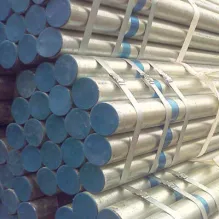-
Cangzhou Yulong Steel Co., Ltd.
-
Phone:
+86 13303177267 -
Email:
admin@ylsteelfittings.com
- English
- Arabic
- Italian
- Spanish
- Portuguese
- German
- kazakh
- Persian
- Greek
- French
- Russian
- Polish
- Thai
- Indonesian
- Vietnamese
- Zulu
- Korean
- Uzbek
- Hindi
- Serbian
- Malay
- Ukrainian
- Gujarati
- Haitian Creole
- hausa
- hawaiian
- Hebrew
- Miao
- Hungarian
- Icelandic
- igbo
- irish
- Japanese
- Javanese
- Kannada
- Khmer
- Rwandese
- Afrikaans
- Albanian
- Amharic
- Armenian
- Azerbaijani
- Basque
- Belarusian
- Bengali
- Bosnian
- Bulgarian
- Catalan
- Cebuano
- China
- China (Taiwan)
- Corsican
- Croatian
- Czech
- Danish
- Esperanto
- Estonian
- Finnish
- Frisian
- Galician
- Georgian
- Kurdish
- Kyrgyz
- Lao
- Latin
- Latvian
- Lithuanian
- Luxembourgish
- Macedonian
- Malgashi
- Malayalam
- Maltese
- Maori
- Marathi
- Mongolian
- Myanmar
- Nepali
- Norwegian
- Norwegian
- Occitan
- Pashto
- Dutch
- Punjabi
- Romanian
- Samoan
- Scottish Gaelic
- Sesotho
- Shona
- Sindhi
- Sinhala
- Slovak
- Slovenian
- Somali
- Sundanese
- Swahili
- Swedish
- Tagalog
- Tajik
- Tamil
- Tatar
- Telugu
- Turkish
- Turkmen
- Urdu
- Uighur
- Welsh
- Bantu
- Yiddish
- Yoruba

Oct . 21, 2024 18:46 Back to list
Understanding 2 Inch Blind Flanges and Their Applications in Industrial Piping Systems
Understanding 2-inch Blind Flanges Their Importance and Applications
When it comes to piping systems across various industries, the components used to connect, seal, and secure the flow of fluids or gases are critical. One essential component in this realm is the blind flange, particularly the 2-inch blind flange, which plays a vital role in maintaining the integrity of piping systems.
What is a Blind Flange?
A blind flange is simply a type of flange that is designed to seal the end of a pipe. Unlike standard flanges that connect two pipes or a pipe to a machinery part, a blind flange has no central opening, effectively blocking the flow of substances. This feature makes it invaluable in several applications where discontinuity in the pipeline is necessary, be it for maintenance, temporary shutdowns, or system modifications.
Material Composition and Design
The design and material composition of a 2-inch blind flange can significantly affect its performance. Common materials include carbon steel, stainless steel, and various alloys, each chosen for their specific properties such as corrosion resistance, tensile strength, and temperature tolerance.
Typically, a 2-inch blind flange adheres to standard dimensions specified by organizations such as ANSI (American National Standards Institute) and ASME (American Society of Mechanical Engineers). The ANSI/ASME B16.5 standard lists flange dimensions and pressure ratings for various materials, ensuring that components can be used reliably within piping systems.
Installation and Sealing
Installing a 2-inch blind flange requires careful attention to detail. The process usually involves the following steps
1. Preparation Ensure that the pipe ends are clean and free of debris. This helps to create a proper seal. 2. Alignment Place the blind flange over the pipe’s end and ensure it is aligned correctly with the bolt holes.
3. Bolting Use bolts to secure the flange tightly. The recommended torque specifications should be followed to prevent leaks and ensure the integrity of the connection.
2 inch blind flange

4. Testing After installation, a pressure test should be conducted to ensure that there are no leaks, confirming that the flange has been installed correctly.
A proper seal is essential because even minor leaks can lead to significant problems, including pressure loss, contamination, or safety hazards.
Applications of 2-inch Blind Flanges
The applications of 2-inch blind flanges are diverse, spanning various industries
- Oil and Gas In the extraction and transportation of oil and gas, blind flanges are crucial for pipeline isolation during maintenance or emergencies. They provide a secure closure point.
- Water Treatment Facilities Wastewater and water treatment plants often use blind flanges for managing flow, allowing for system upgrades or repairs without halting operations completely.
- Chemical Processing In chemical plants, blind flanges prevent the accidental release of hazardous substances and maintain system integrity during cleaning and servicing.
- HVAC Systems In heating, ventilation, and air conditioning systems, these flanges can help isolate sections of ductwork or pipes for inspection and maintenance.
Conclusion
The importance of a 2-inch blind flange in various industries cannot be overstated. Its simple yet effective design allows for the secure blocking of pipe ends, ensuring safety and operational integrity. Considering the potential implications of a faulty flange— ranging from leaks to catastrophic failures—selecting the right blind flange made from suitable materials and ensuring proper installation practices are paramount.
As industries continue to seek efficiency and safety in their operations, the role of blind flanges will only grow more significant. Understanding their applications and implementing best practices in their use will help maintain fluid systems' reliability and safety across the board.
Latest news
-
ANSI 150P SS304 SO FLANGE
NewsFeb.14,2025
-
ASTM A333GR6 STEEL PIPE
NewsJan.20,2025
-
ANSI B16.5 WELDING NECK FLANGE
NewsJan.15,2026
-
ANSI B16.5 SLIP-ON FLANGE
NewsApr.19,2024
-
DIN86044 PLATE FLANGE
NewsApr.19,2024
-
DIN2527 BLIND FLANGE
NewsApr.12,2024
-
JIS B2311 Butt-Welding Fittings LR/SR 45°/90° /180°Seamless/Weld
NewsApr.23,2024
-
DIN2605-2617 Butt-Welding Fittings LR/SR 45°/90°/180° Seamless/Weld
NewsApr.23,2024











